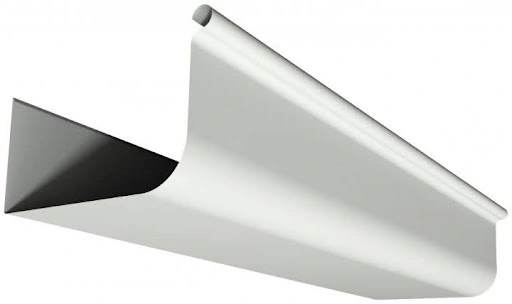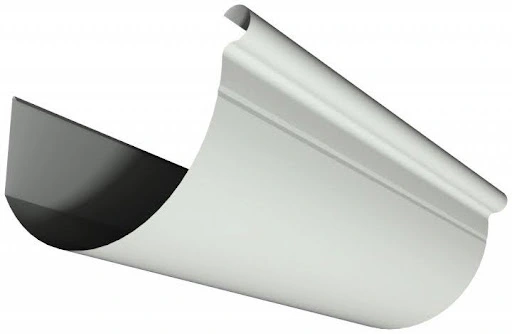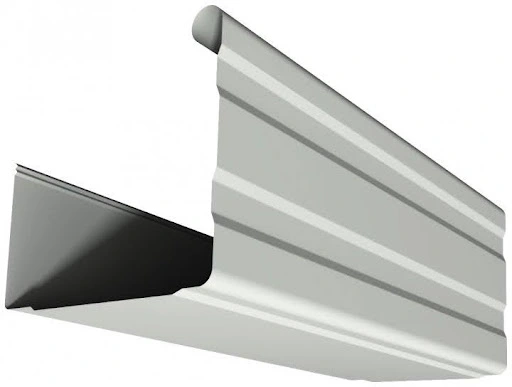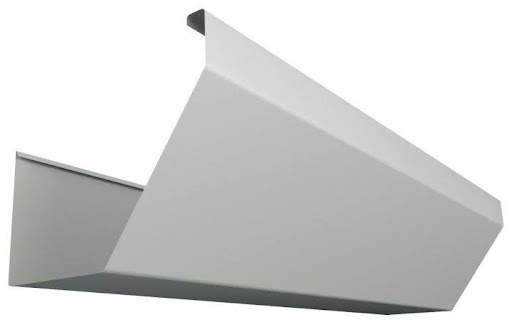Adelaide homeowners know how unforgiving the South Australian weather can be. One week it’s pelting down with heavy rainfall, the next it’s dust-dry with fierce summer sun. And there sits your gutter system right on the fascia board, quietly taking all the punishment
.But here’s the thing. The wrong choice of gutter profile can mean badly installed gutters that overflow, rust out fast, or fail when storms hit. That leads to water seeping into walls, rotting timber fascia, and damaging your roof rafters.
In this guide, you’ll discover the most-used types of gutters Australia has to offer, especially for Adelaide’s climate and architecture. We’ll cover both standard and premium guttering profiles, the right guttering materials for local conditions, and what to consider before installing gutters on residential and commercial buildings.
These gutter types suit most eaves gutters and fascia boards across South Australian suburbs. They match many architectural styles.

This one’s a big drinker!
It’s got a deeper belly than most fascia gutters, usually around 125 mm deep with a base close to 90 mm wide. That means it can cop a proper downpour without spilling over.
That extra depth makes a real difference in places like the Adelaide Hills, where we’ve seen storms dump 40–50 mm in under an hour. If you’ve got a big roof (say 200 m² or more), this is a solid pick.
Most roofers will recommend a gutter guard if you’ve got stringybarks or pines close to the house. Without it, leaves and needles will block the flow fast, and you’ll be up the ladder, cleaning the gutters every second weekend.

The flat back gutter looks neat, sits flush against the fascia with no awkward gaps for muck to get in.
You’ll see these a lot on brick-veneer homes around Adelaide’s suburbs.
They’re normally about 115–125 mm wide and 75 mm deep, so not the biggest capacity, but tidy for moderate roof sizes.
If you go this route, make sure the brackets are spaced tight, no more than a metre apart or 600 mm in windier spots like Seaford or Aldinga.
A sag in these will look ordinary and mess with water flow.

The Ogee Gutter has a bit of old-school charm to it. The front’s got a decorative “S” curve design, which is why they’re still popular on heritage places in North Adelaide, Unley, or even Port Adelaide.
Width is usually 125 mm, holding roughly 0.7 litres per metre.
But the downside is…
That curve loves catching leaves. If you’re in a leafy street, around big plane trees in autumn, you’ll need guards or regular clears. Or you’ll end up with a mini swamp in there.

The trimline gutter is slim and sharp-looking. It’s about 115 mm wide with a depth of around 75–85 mm. Perfect for modern homes or places with flat to low-pitch roofs where you don’t need massive water capacity.
If you’re near the coast, in Glenelg, Brighton, or Port Noarlunga, go for Colorbond® steel Ultra gutter. The salty air here can rust ordinary steel in half the time. And once rust sets in, it spreads faster than you’d think.
These ones aren’t your run-of-the-mill profiles. They cost a bit more, but you’re paying for better water flow, less muck-around maintenance, and a finish that really lifts the look of your place.

The Shoreline Gutter is the “hidden” style. The whole gutter sits behind the fascia. So, from the street, you just see a sharp, clean roof edge.
It’s perfect for modern builds in spots like Norwood, Prospect, or Burnside, where straight lines matter. Depth is usually 115–130 mm, so it handles a fair bit of water.
But because it’s concealed, you won’t notice pooling until damage is done.
To fix this, make sure the fall is right; at least 1:500 slope as per SA building rules contained in the National Construction Code, so water drains properly. And get a roofer who’s handled concealed gutter installations before; something we’ve consistently done at Roof and Render, though usually as part of a full roof replacement.
A dodgy job here during the gutter installation means rust, leaks, and a repair bill you don’t want.

This one’s a classic. It resembles a pipe sliced down the middle, typically 150 mm wide, featuring a smooth curve that allows water and leaves to flow through easily.
In leafy areas like Stirling or Crafers, it’s a common option because gum leaves don’t have many corners to get stuck in. It works just as well on houses as it does on warehouses, especially when paired with round downpipes for improved flow. If you’re near the coast, maybe Glenelg, Port Noarlunga, or Semaphore, go the Colorbond® Ultra option.
In coastal suburbs, salt in the sea air can make standard steel rust about twice as fast as it would inland.
Final Note: Before we finalise your roof replacement, please let us know at the inspection or in the showroom which gutter style you prefer. That way we can make sure it’s the right match for your home, your suburb, and the weather you cop with each year.
The D-gutter is hands-down the most common in Adelaide. Its 125 mm deep profile and 90 mm wide base give it enough capacity to handle the 40–50 mm of rain that can fall in under an hour during summer storms. It’s the best choice for both older homes and new buildings because it fits well with fascia boards and suits most roof pitches.
For serious downpours, you’re looking at a D-gutter or box gutter. Both have high water-holding capacity and wide bases that shift water quickly to downpipes. When installed with the correct fall (at least 1:500 slope) and the right number of downpipes for your roof area, they can handle heavy rainfall without spilling over, even in storm-prone spots like the Adelaide Hills, Henley Beach and Glenelg.
Technically, yes. You can swap out old gutters while keeping the existing roof. But when gutters are replaced on their own, there’s a higher risk of a mismatch in profiles, gaps between the gutter and fascia, and poor sealing where the gutter meets the roof sheets. Over time, that can cause water to backflow under the roof edge, rot the fascia, or even damage the eaves.
It’s why at Roof & Render SA, we usually replace fascia and eaves gutters as part of a full roof replacement. It means all components are new, properly aligned, sealed, and colour-matched. You end up with a system that performs better, lasts longer, and looks sharper from the street.
If your gutters are failing, it could be a sign that your whole roof needs a proper check. When you replace your roof with Colorbond®, Roof & Render SA fits new fascia gutters, half-round gutters, or concealed gutters as part of the job. With over 100 years of local experience and Australia’s #1 Colorbond® display centre, you’re in safe hands.
Visit our office showroom at 2/22 O’Sullivan Beach Road, Lonsdale, to see the options in person. Or contact us today for expert advice on the best gutter types for Adelaide conditions.
Fill in the form below to book a free consultation at our Colorbond Showroom in Lonsdale.
We will give you a call within 24 hours to organise a time that suits you.
Fill in the form below to book a free consultation at our Colorbond Showroom in Lonsdale.
We will give you a call within 24 hours to organise a time that suits you.